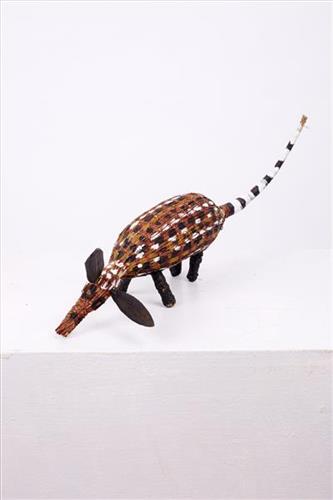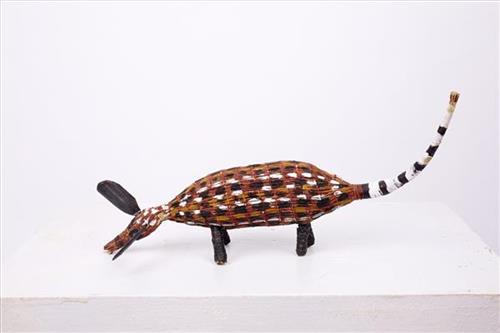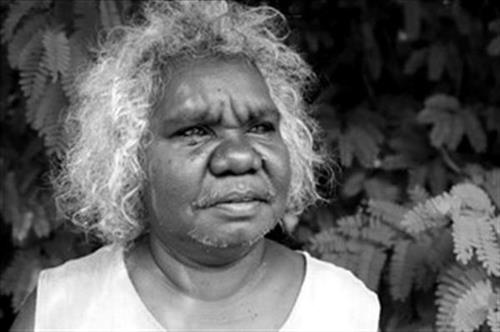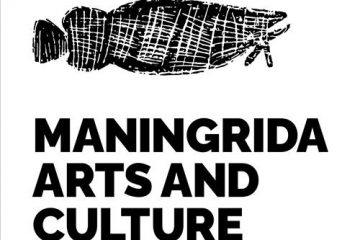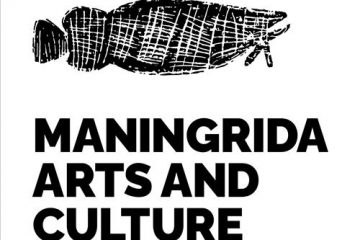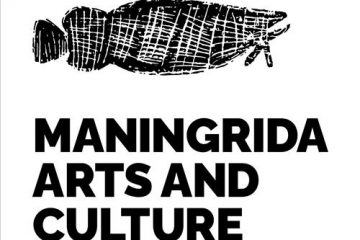111981658477
Yok (Bandicoot)
This work depicts Yok (bandicoot) Djarngo. They are part of a larger story of two bininj (men), Kamarrang and Wamut (skin name) who went hunting for yok (bandicoot) with their djamo (dogs) but couldn’t find any. In the past the Djungkay (managers) would perform rituals at the site for Yok, a hill near Bulukadaru, calling out all different kured (country): Korlobidahdah, Mankorlod, Buluhkadaru, Ankadbadberri, Malyarngak, Raminggining, Ji-balbal, Ji-bena. Baby yok would then spread throughout these areas. Today there are no yok because the Djunggayi have not been doing this work. Lena is a Traditional Owner for Yok and her husband, Bob Burruwal, is Djunggayi.
Lena remembers when she was young and went hunting for yok as she was very hungry. It was raining and her djamo (dog) would not go with her so she went with her kunjila (axe) and found a yok in a lorrkon (hollow log). She showed her mother Lena Djamarrayku. She cooked it and ate it back at camp.
Yok also has a powerful inside, mardayin, essence, but this depiction of the creation heroes and the dogs hunting is an outside public story.
